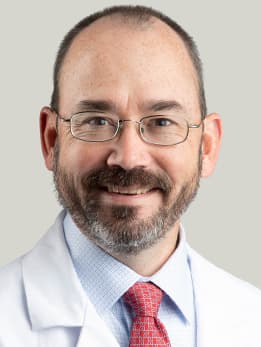Finding a living donor when you need an organ transplant

Seeking a living organ donor can raise feelings of discomfort and even embarrassment in many transplant patients. The idea of asking a person to donate a part of their body can seem unimaginable; you may worry about feeling indebted to someone who says yes or concerned about the risk to them. But it’s important to realize that many more people say they’re willing to donate an organ than you might expect (one out of four people, according to the United Network for Organ Sharing). They want to help, and we encourage you to allow them to help.
1 out of 4 people say they are willing to donate an organ.
If you’ve decided to try finding a living donor, start by considering your different social connections as circles. Begin by contacting your inner circle (family and close friends), then move to the next bigger circle (such as your acquaintances from work, recreational sports league or religious institution), then lastly, everyone else through larger, more public campaigns.
Most importantly, don’t think of this as asking for an organ. Think of this as sharing your story. What often sparks someone to come forward as a donor is feeling a connection. Donors often tell us they felt they could relate to a patient’s story and in turn wanted to assist.
When sharing with others your need for an organ transplant, the following tips can be useful.
Find a champion: A donor champion is someone who knows you well and is vested in your health. Donor champions play a clutch role – they may not be able to donate, but they can help you find someone who can. That’s because it’s usually much easier for your champion to ask anyone on your behalf than it is for you. Champions should educate themselves about your health status, what’s involved with donation and be honest, accurate, open and respectful. Their goal is to share your story and information about the process of donation and then let people make their own decisions. An example of a champion starting a conversation could be:
Jasmine’s a great friend of mine. She has kidney failure and she’s on dialysis, and the doctor says a kidney transplant is her best chance of treatment. I know this is big ask, but I would be grateful if you’d consider being evaluated to donate...
The National Kidney Foundation also has a sample letter/social media post.
Get personal: Start with an email to close family and friends that explains what’s happening with your health. Describe your experience. Share that doctors have told you your best option is a living donor transplant, and some nonmedical details on how you hope it could change your life: Perhaps you’ll be able to spend more time with grandchildren, or get to travel. Include information about how the email recipient can contact your transplant team if they are interested in learning more. Assure them that potential donors are thoroughly evaluated by an independent medical team to ensure their safety.
Try different methods: Raise awareness by posting your story on social media, on your car windows and bumper stickers, reaching out to newspapers, radio stations, church bulletins and community flyers, and placing ads on community bulletin boards. The more exposure you have, the more likely you are to find a donor.
Ask for help: We’ve had patients request the Living Donor team look over their message before emailing or posting online to make sure they didn’t forget to include pertinent details. We have plenty of information to help educate you and potential donors about the transplantation process. The American Society of Transplantation and the American Transplant Foundation also offer in-depth advice on searching for a living donor.
Kidney or liver? Donating liver tissue is a more complex operation requiring a longer recovery period for the donor than donating a kidney. You should still use these same strategies to find a liver donor, while being aware and open about the complexity of the procedure.
Remember what is and isn’t legal: Donors may have lost wages, childcare, travel and lodging costs covered by programs like the National Living Donor Assistance Center and the American Living Organ Donor Fund. You cannot, however, pay someone to donate their organ.
Bring family to your clinic appointments: It’s a great chance for them to learn about the transplant process and gain confidence in your medical team. They can also learn about donation at these appointments and may consider it if they hadn’t before. This is a great chance for them to become your champions, too! Discuss your transplant plans with your family.
Don’t rule someone out: Your goal is to get potential donors to call your transplant team and ask to be evaluated. Let the transplant team determine if it's safe for them to donate.

John LaMattina, MD
Dr. LaMattina is a skilled transplant surgeon with a particular interest in both living donor liver and living donor kidney transplantation.
See Dr. LaMattina's physician profile